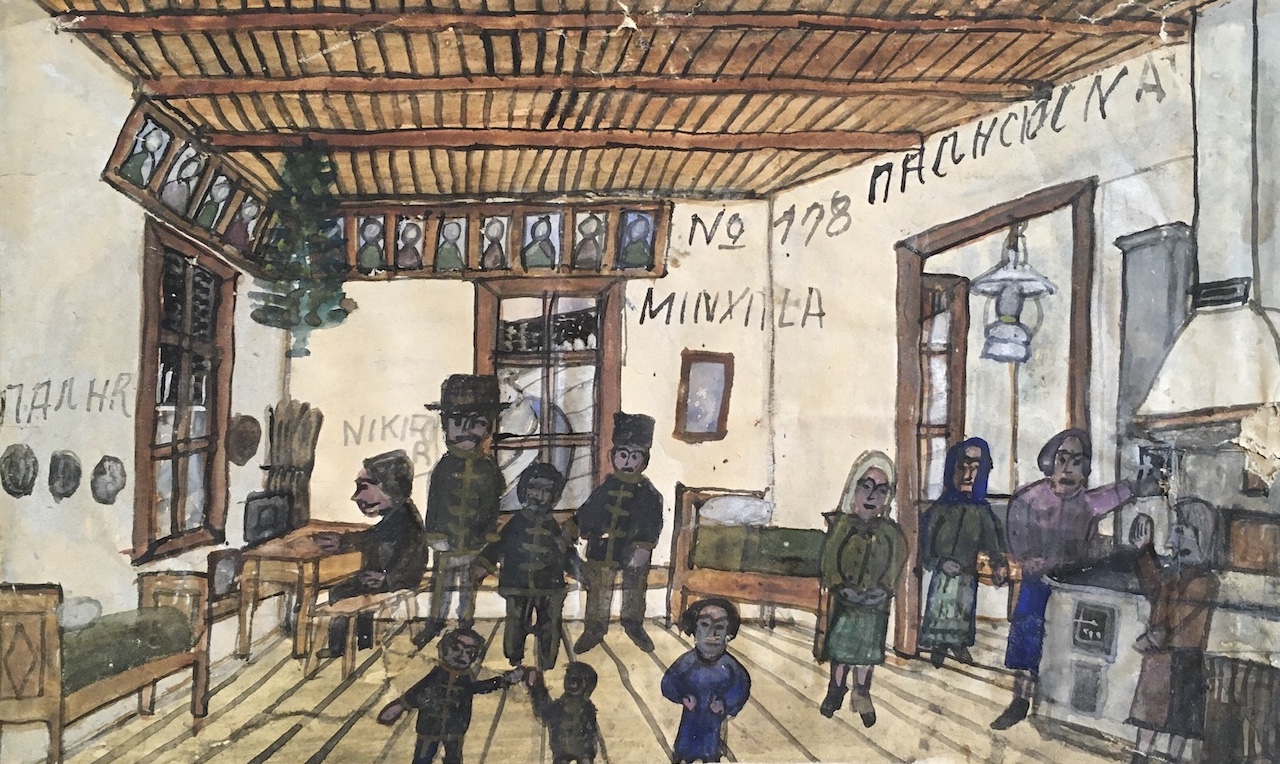Nikifor KRYNICKI
|||||||||||
Krynica-Zdrój (POLAND), 1895 – Folusz (POLAND), 1968
Epifaniusz Drowniak, or Nikifor Krynicki according to his pseudonym, was born in Poland in 1895. He spent the first years of his life in poverty with his mother. He was orphaned during the First World War and found himself isolated and marginalised in his village of Krynica. Epifaniusz began using his nickname “Nikifor” in childhood, and used it at his first exhibition in Warsaw in 1949. It is not known when Nikifor began to draw and paint, but it seems that he always wanted to be a painter. His earliest surviving works date from 1920 and already show great effort and a genuine desire to perfect his technique. His work is commonly associated with naive art and art brut.
Nikifor often depicts sacred themes in his work, with a particularly recurrent subject: the Greek Catholic Church, whose image looms over the horizon. He also uses secular themes such as views of landscapes, architecture and portraits. His works on paper are always small. Extremely poor, he used to reuse all sorts of materials (packaging, school books, etc.) and paint them on both sides. He lived from the sale of his drawings, “just enough to live on” in his words. However, his reputation began to grow in the 1950s and 1960s when Ella and Andrzej Banach, collectors, discovered his work. They exhibited, wrote and looked after him. From then on, he was exhibited in many countries (Poland, France, Belgium, the Netherlands…) and notably at the Dina Vierny Gallery in 1959. Another person takes care of him from the 1960s: Marian Włosiński, a painter who sees in Nikifor a great artist. His reputation continued to grow until his death in 1969. A museum was dedicated to him in 1995 in his native village of Krynica as well as a biopic “Mój Nikifor”, in 2004.
The painter Edward Dwurnik said of him: “I have never experienced stronger emotions than those aroused by his paintings when seen in person. I first saw them in 1965. He was an accomplished painter, tall and deep, and he approached painting like the Renaissance masters – in a classical and honest way. Everything he painted was something he had SEEN. What he had seen was then reworked by his memory and imagination. It was perfect to free himself from the constraints of reality and create a vision, a world, his own structure. He was telling his story and painting his world.”

Sans titre
14,3 x 26,5 cm, Aquarelle et techniques mixtes sur papier

